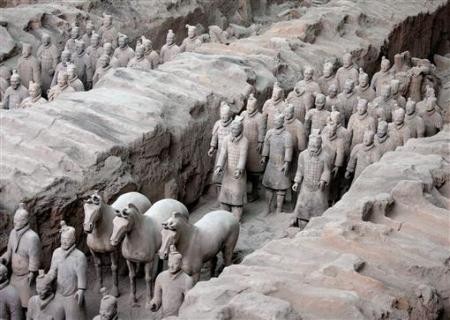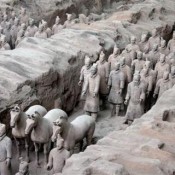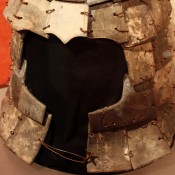Archaeologists from the Shaanxi Provincial Institute of Archaeology recently announced the discovery of forty five tombs just about 5 km. away of the mausoleum of Emperor Qin Shihuang and its Terracotta Warriors, in Xian, China.
The tombs were revealed from May to September 2013 and they are distributed over an area of 1,200m. by 300m. All 45 tombs contained the remains of people buried in coffins with their legs twisted, according to a burial custom typical of the Qin Dynasty. Alongside them, 300 pottery objects were buried, many of which carried the sign reading Li.
According to a historical record written by Sima Qian during the Western Han Dunasty ((206 BC-AD 24), Li was a township established in 231 BC near the site where the 1st Emperor’s mausoleum was to be buit, in order to host the people who would work in the project. The report states that more than 30,000 families moved into Li in 212 BC. The site went on to become a prosperous community.
“From the character Li, we can preliminarily judge that the 45 tombs were low-ranked. But important tombs belonged to the township of Li,” says Sun Weigang, a research associate in the Institute.
The site also gave 5 more tombs which are considered of later date as they reflect somehow different burial customs.




